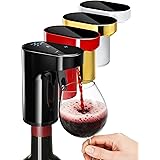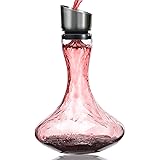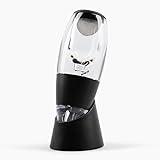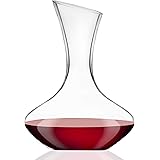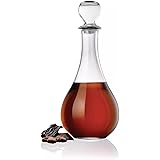Elevate Your Culinary Journey: Mastering the Art of Wine and Food Pairing
There’s an undeniable magic that happens when a dish and a wine come together in perfect harmony. While many approach the world of wine pairing with a “drink what you like” philosophy – and there’s certainly nothing wrong with that – unlocking the secrets to complementary flavors can transform a simple meal into an unforgettable culinary experience. As highlighted in the insightful video above by sommelier Pierre Asti, achieving this synergy isn’t about rigid rules, but rather understanding a few key principles.
For those eager to move beyond the basics and truly enhance their dining adventures, the journey into wine and food pairing promises delightful discoveries. Pierre, with his extensive experience since 2009, likens exceptional pairings to legendary duos – individuals great on their own, yet extraordinary when combined. This guide will elaborate on his seven essential tips, offering deeper insights and practical advice to help you master the art of pairing wine and food with confidence.
The Cornerstone of Classic Pairing: What Grows Together, Goes Together
One of the most intuitive and time-honored approaches to pairing wine and food is the classical or regional match. This principle suggests that wines from a specific region are often the ideal complement to dishes originating from the same area. Why is this so effective? The answer lies in centuries of culinary and viticultural evolution. Local ingredients, climate, and cooking traditions naturally influence both the food and the wine produced there, leading to inherent compatibility.
Consider the classic example of Italian red wines with Italian pasta dishes. A robust Chianti, for instance, with its bright acidity and savory notes, cuts through the richness of a tomato-based ragu, enhancing both components. Similarly, a Spanish Albariño, a crisp white wine, is a superb partner for the seafood-rich paella from Spain, or a Spanish Tempranillo for those who prefer red. As Pierre notes, his homemade Chicken Ricardeau, a heavy, tomato-based chicken dish, finds its perfect partner in a full-bodied Italian red, despite the conventional “white wine with chicken” advice. This demonstrates how the dominant flavors of the dish, particularly the sauce, dictate the best match.
Match the Weight: Understanding Body in Wine and Food
Beyond geographical origins, the concept of “body” is crucial in successful food and wine matching. Just as foods range from light and delicate to rich and heavy, so too do wines. The body of a wine refers to its perceived weight or richness on the palate, influenced by factors like alcohol content, residual sugar, and oak aging. Lighter-bodied wines feel delicate and refreshing, while full-bodied wines are more viscous and intense.
The trick is to match the intensity. A light-bodied white wine like a Pinot Grigio or Sauvignon Blanc would be overwhelmed by a hearty beef stew. Conversely, a full-bodied Cabernet Sauvignon would completely overshadow a delicate pan-seared sole. Instead, aim for balance: light foods, such as fresh salads, raw oysters, or simply grilled white fish, pair beautifully with light-bodied wines. Richer, more substantial dishes—think braised meats, creamy pastas, or complex stews—demand a wine with enough presence, like a full-bodied Chardonnay or a bold Zinfandel, to stand alongside them. A helpful visual cue, as suggested in the video, is often matching the color and texture: light-colored, delicate sauces with light wines; dark, heavy stews with darker, fuller wines.
The Refreshing Power of Acidity: Acid Mirrors Acid
Acidity in wine is like a squeeze of lemon over a dish – it brightens flavors, cleanses the palate, and makes your mouth water in anticipation of the next bite. High-acid wines are vibrant and zesty, often characterized by citrus, green apple, or tart berry notes. When it comes to wine pairing tips, mirroring acid with acid is a golden rule.
Foods high in acidity, such as salads with vinaigrette dressings, tomato-based sauces, or dishes featuring citrus, demand a wine with comparable acidity. A low-acid wine paired with an acidic dish will fall flat, tasting flabby and dull. On the other hand, a crisp Sauvignon Blanc, a zesty Pinot Grigio, or even a sparkling wine, with their refreshing acidity, can beautifully complement dishes like chicken piccata, goats cheese, or seafood prepared with lemon. The wine acts as a natural counterpoint, cutting through richness and enhancing the overall flavor profile. This cleansing effect is particularly valuable when enjoying oily fish or buttery shellfish, where a high-acid white wine can prevent the palate from becoming fatigued.
Tannin’s Best Friend: Tannin Loves Fat
Tannin, primarily found in red wines, is the compound that creates a drying, slightly bitter, or astringent sensation in your mouth – that “puckering” feeling. While this might sound unappealing on its own, tannin plays a critical role in red wine pairing, especially with fatty foods. Fat acts as a buffer, softening the harshness of tannins and allowing the wine’s fruit and other flavors to shine through.
This is why a well-marbled steak is the quintessential partner for a bold Cabernet Sauvignon or a robust Syrah. The protein and fat in the meat bind with the tannins, making both the wine and the food taste smoother and more integrated. Other excellent matches include braised duck, lamb, or rich sausages. Conversely, acidic foods tend to clash with high-tannin wines, exaggerating their bitterness. A simple guideline is: the leaner the meat, the lighter the red wine needed; the fattier the meat, the more tannic the red wine can be. This interplay creates a truly harmonious and satisfying culinary experience.
Spicy Delights: Heat Needs Sweet
When it comes to spicy foods, the general rule of thumb for wine with spicy food is that heat needs sweet. The capsaicin in chili peppers that creates the burning sensation is actually calmed and balanced by sweetness. Pairing a dry, high-alcohol wine with spicy food can exacerbate the heat, making the dish feel even hotter and the wine taste bitter.
This is where sweet or off-dry (semi-sweet) wines, often misunderstood, truly shine. Varietals like a Riesling, Moscato, or Gewürztraminer, with their inherent sweetness and often lower alcohol content, provide a soothing counterpoint to fiery dishes. They cool the palate and allow the complex flavors of the food to emerge without overwhelming the senses. Imagine a vibrant Thai curry alongside a slightly sweet Riesling – the experience is surprisingly refreshing and incredibly satisfying. Additionally, when it comes to dessert pairings, the wine should always be sweeter than the food itself to prevent the wine from tasting sour. However, as Pierre points out, dark chocolate is an exception, often finding a surprising kinship with a rich Cabernet Sauvignon.
Crisp and Clean: Salty and Fried Needs Acidity and Effervescence
Few combinations are as celebratory and effective as sparkling wine with salty and fried foods. This pairing might seem unconventional to some, but it’s a secret beloved by sommeliers for good reason. As Pierre enthusiastically recounts his experience with fried chicken and Champagne, the magic is in the bubbles and acidity.
The high acidity and effervescence (bubbles) in wines like Champagne, Cava, or Prosecco act as a natural palate cleanser. They cut through the richness and grease of fried foods, offering a refreshing contrast and minimizing the sensation of saltiness. Each sip prepares your mouth for another bite, creating a delightful interplay of textures and flavors. Think of classic fish and chips with a sparkling brut, or crispy fried chicken with a glass of crisp Champagne. The acidity also works wonders with salty dishes, much like a squeeze of lime on a taco. This combination proves that sometimes the most unexpected pairings yield the most delightful results, transforming heavy foods into light, enjoyable experiences.
Back to Nature: Earthy Needs Earthy
The final key to successful wine and food pairing involves embracing the concept of “earthiness.” Certain foods possess distinct earthy, sometimes umami-rich flavors that resonate beautifully with specific wine varietals. These include ingredients like mushrooms, beets, lentils, truffles, and wild game such as venison, boar, or pheasant.
To complement these natural, grounding flavors, seek out wines that also exhibit earthy characteristics. Pinot Noir, with its notes of forest floor, mushroom, and cherry, is a classic match for dishes featuring fungi or game birds. Other excellent choices include a Gamay (found in Beaujolais), Grenache, or even certain styles of Chablis. These wines often possess a savory depth that mirrors the umami in earthy ingredients, creating a profound sense of harmony. The goal here is to find wines that enhance, rather than mask, the rustic beauty of these unique flavors.
Making Wine Pairing Part of Your Everyday
Ultimately, the goal of pairing wine and food is to enhance your enjoyment, not to create stress. As Pierre Asti wisely advises, for everyday meals, keep it simple. Focus on the dominant flavors of your dish, paying particular attention to the sauces, as these often carry the most influential taste profiles. Is the dish sweet, salty, acidic, or fatty? Once you identify the prominent characteristic, you can apply these seven principles to guide your wine selection.
Whether you’re hosting a dinner party or simply enjoying a quiet meal at home, understanding these foundational concepts will empower you to make informed choices. Experimentation is key; don’t be afraid to try new combinations. With a little practice, you’ll soon be confidently creating memorable meals, truly elevating your culinary journey through the art of wine and food pairing. So, grab a bottle, prepare a dish, and let your palate guide you towards delicious discoveries!



